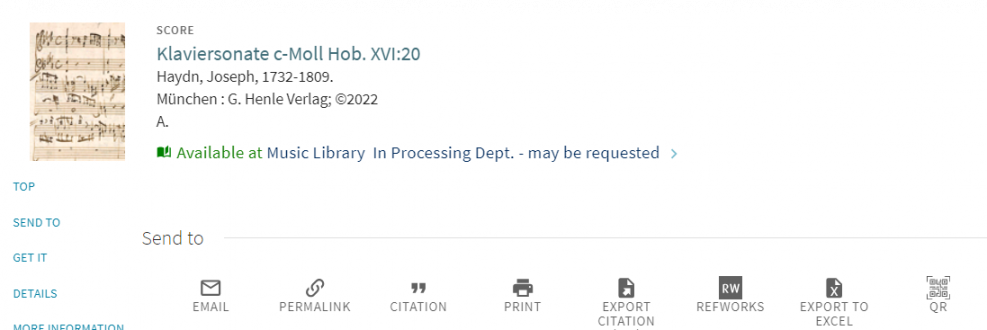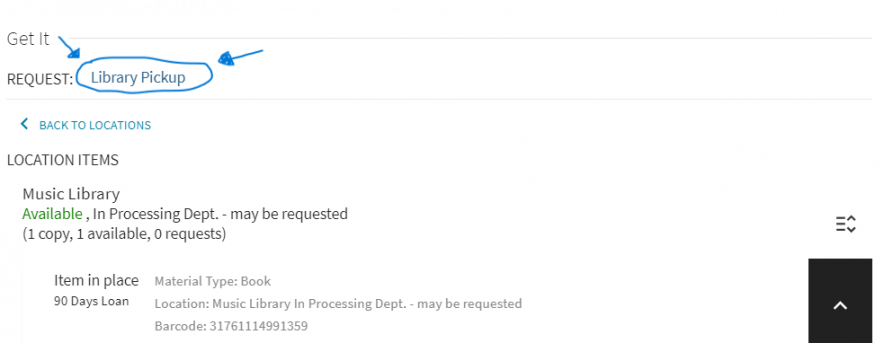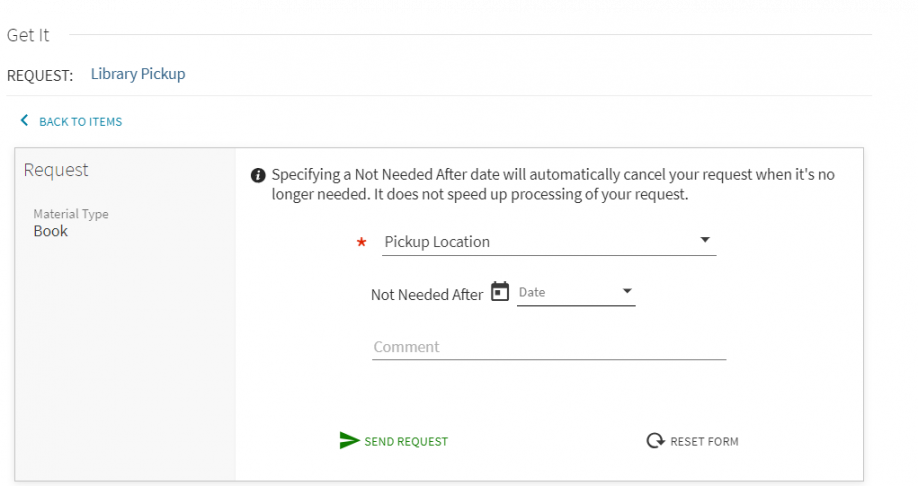Music scores found in our collection go through a journey before making their way to the Music Library’s shelves ready for you to use. The following is that journey in a nutshell.

1. Acquisitions: Purchasing, Searching, and Inventorying
When music scores are purchased and arrive from our vendors, they start their journey in the Acquisition Department at Robarts Library where our trained Collection Specialists’ search each score using iSearch. iSearch is a cataloging program that was created in-house. It uses standard identifiers such as ISBNs, ISMNs, etc. to perform bulk searches of music scores from external global catalogs like Worldcat. Once these standard identifiers are scanned into the program, iSearch locates matching existing bibliographic records and imports them into our library’s catalog. Not all scores can be located using this method. Sometimes the program indicates that something is “not found.” When the program flags a score as “not found,” the Collection Specialist manually searches each score in Worldcat to see if they can locate an exact matching record. Sometimes they are successful and sometimes they are not. Not all music scores have ISBNs or ISMNs so they too have to be manually searched.
All matching bibliographic records are imported into our library’s catalogue and are requestable through the catalogue or by asking a staff member (see Postlude at end of article for more information) even if they haven’t made their way through the cataloguing and bindery departments. The scores are inventoried into spreadsheets by the Collection Specialist as they run their iSearches and then placed into crates that correspond to the iSearch date. These crates are then placed into the Cataloguing Department’s backlog ready for the Music Cataloguer.
2. Cataloguing Department (aka Metadata Services)
The next stop for newly purchased music scores is the Cataloguing Department at Robarts Library. The Music Cataloguer retrieves one crate at a time to work on. As previously mentioned, the crate contains a mix of music scores; some with found bibliographic records and some with no found bibliographic records.
All found bibliographic records are known as copy catalogue (aka derived) records. Their quality/completeness varies, which results in various amounts of record enhancement work being performed by the Music Cataloguer. Some require minor altering, some require major altering, and in some rarer cases no altering is required at all. Regardless, the Music Cataloguer, following long-established cataloguing rules and standards, goes over each score and corresponding bibliographic record to ensure the information is accurate and complete. Once record enhancement work is complete, the Music Cataloguer assigns it a call number so that they can be retrieved from the Music Library stacks.
For scores with no pre-existing bibliographic records, the music cataloguer performs a secondary manual search of Worldcat and other external catalogues. Sometimes a matching record can be found at this time. This is because there has been enough of a delay since the library purchased the score; another library in the world may have purchased their own copy, cataloged it, and then made that bibliographic record available. In this case, the Music Cataloguer will import the record and enhance it as needed.
For scores that still do not have existing bibliographic records from external resources, the Music Cataloguer performs original cataloguing. Original cataloguing is when a bibliographic record is built completely from scratch ensuring that established cataloging rules and standards are properly applied. Building a record from scratch takes a significant amount of time, especially when the score is published in non-Roman alphabets (i.e, Cyrillic, Arabic, Hebrew, etc.) or character-based alphabets (i.e. Chinese, Japanese). These records will require a cataloguer with language expertise to transliterate into the Roman alphabet so that they can be catalogued.
3. Bindery Department
Once the Music Cataloguer is done, scores are sent to our internal Bindery Department in Robarts Library. The bindery department makes decisions on whether they can bind them in-house or if they need to go to an external binding company. Many factors are considered when they make their decisions, i.e. margins, thickness, stitching, dimensions, etc.
4. Music Library
Once materials are bound, they are shipped to the Music Library. The Music Library unpacks these new scores and finishes processing (i.e. checking call numbers, applying stamps, etc.).
Postlude : Requesting Scores from backlog
Not all of our collection has made it to the Music Library Stacks yet as it is currently sitting in the cataloguing backlog at Robarts Library waiting to make its’ way through the cataloguing and binding worklftow. When you come across a score in our catalogue that is in our backlog there are a couple of different ways to request the score from the cataloguing department.
1) Via the public catalogue:
If the catalogue record indicates the location as “Music Library – In Processing Dept. - may be requested” or “Music Library - Not Available” you can place a request for the item through the public catalogue record. Under GET IT you can click “Library Pickup” and fill out the form. This completed form is automatically sent to the Robarts Library cataloguing department. The music cataloguer will retrieve the score and finalize cataloguing/binding. Once the score has made it to the Music Library, you will receive a notification that it is available for pickup at the Circulation Desk.



2) Verbal request:
If you come across a score in the catalogue that indicates the location as “Music Library – In Processing Dept.” you will have to ask a staff member at the Music Library to place a request on your behalf to the cataloguing department because the “Request - Library Pickup” function is missing in the record. Once the music cataloguer receives the request from Music Library staff they will retrieve the score and finalize cataloguing/binding. Once the score has made it to the Music Library, you will receive a notification that it is available for pickup at the Circulation Desk.